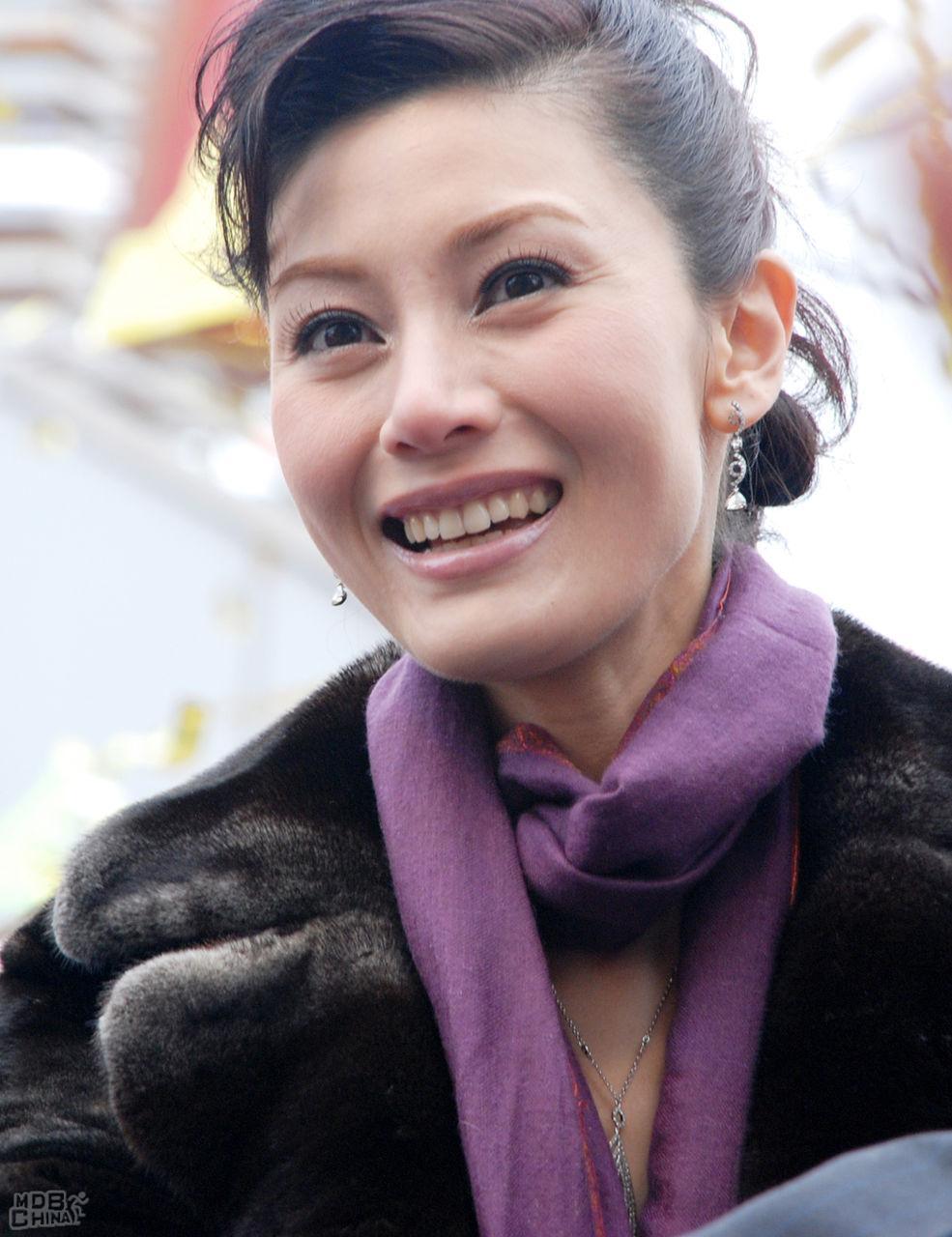Migrate or educate in China's borderlands
By Stevan Harrell and Aga Rehamo
Early 21st-cenutry China is undergoing several radical transformations that are profoundly affecting its physical, social, and cultural fabric.
Not as dramatic, perhaps, as the earlier series of land reform, collectivization, the Great Leap Forward, the Cultural Revolution, and final decollectivization that framed the era of Mao Zedong's state socialism, the current processes of urbanization, labor migration, universalization of education, transport network modernization, reconstruction of villages, and social class formation, nevertheless seem destined to have an even morepermanent and profound effect on the physical landscape, social structure, and culture of the world's largest nation.
Physically, China's cities already contain about half of its citizens, while freeways, high-speed trains, and ordinary paved highways radically reduce transport distances, and hundreds of millions of rural residents migrate yearly to cities to work in factory, construction, and service jobs, while increasingly modern urban social services remain unavailable to them because of the caste-like restrictions of the household registration, or hukou system.
Almost all urbanites and most rural children in the wealthier coastal provinces receive at least a high-school education, while even in remote rural areas middle-school has become the legal and in most cases the factual minimum.
In many ways, these rapid social changes have their greatest effect on China's 110 million ethnic minority residents. Because of the physical remoteness of their home areas, even into the 1990s many members of China's ethnic minorities were relatively little affected by the trends of infrastructural construction, expanded rural education, and rural-urban migration that transformed rural areas in China's majority-Han regions.
But in the past decade this has changed, as migration, education, and media now reach just about everywhere in China. Yi migrants from Liangshan in Sichuan were found enslaved in factories in Dongguan, Guangdong, in 2008; the government recruits migrant workers from places as remote as the Dulong river valley in the far northwestern corner of Yunnan, which before 1999 required three days walking just to get to the local county seat, and the ethnic riots in Urumqi in 2009 were started when Han migrants in Guangdong spread an untrue rumor that Uyghur workers had raped a Han woman, inciting Han to kill two Uyghur workers and, when the news spread to Xinjiang, setting off what can only be described as race riots.
Recent changes have also had their cultural effects in minority regions. Education, mobility and media reach have brought dramatically higher rates of literacy to minority regions, but partially because of the increasing economic importance of migration to Han-dominated cities, most of the increased literacy has been in the Chinese language, threatening many of the gains in minority-language literacy made by the regime's otherwise praiseworthy policies of promoting minority languages and cultures.
But there is also mobility in the opposite direction, as mostly-Han urban tourists visit minority regions by the hundreds of millions, seeking clean air, natural vistas, and the nostalgic experience of a less complex and harried life. This, in turn, causes governments and local people in minority regions to re-fashion their traditional cultures to appeal to tourist tastes; at the same time they become more and more fluent in the mainstream culture that combines Chinese tradition and globalizing trends.
As a native scholar and an outsider with considerable experience in the minority communities of Sichuan, we have observed this process as it has unfolded over the past two decades in one of China's formerly most remote minority regions: Liangshan Yi Autonomous Prefecture in southwestern Sichuan. In this article, we illustrate the interwoven physical, social, and cultural changes of 21st-century China as they have taken place in the interaction between local society in Liangshan and larger national and global trends.
The setting
The Nuosu Yi people, who live in the Liangshan Yi Autonomous Prefecture and neighboring counties in Sichuan and Yunnan, are experiencing China's social, cultural, economic, and environmental change at unprecedented speed. All through the period of Maoist socialism, despite the political and economic revolution, the overwhelming majority of the population continued to pursue a modified version of their traditional livelihood, which combined agriculture, animal husbandry, and forestry, employed exclusively human and animal labor, and was tied to markets only in very minor ways.
Few went to school, and even fewer continued beyond a few grades of elementary school. A Nuosu child's education was mainly concerned with the techniques of farming and herding, gender-appropriate handicrafts, and ethnic and clan lore, with perhaps a few years of ineffective Chinese-language schooling thrown in, and the expected life course was to grow up, marry a spouse selected by clan elders, and settle down to continue the life of farming, herding, forestry, handicrafts and ritual.
Almost no one worked outside their home county, and in many areas most people, especially women, remained effectively monolingual in the Nuosu language, or could only speak local varieties of Chinese with a heavy accent.
Since the beginning of the Reforms in the late 1970s, however, and particularly since about 1990, all this has been changing rapidly as part of China's overall transformation. Liangshan has become much more closely connected to the outside world, and almost no one goes without school education or expects to spend his or her whole life in a village. This has brought about a real revolution in the life cycle and life choices of Nuosu people in an increasingly commercialized, globalized, and unequal China: there are both unprecedented opportunities and unforeseen perils in this transition.
Map showing Liangshan Prefecture and our field sites in Sichuan and China
Liangshan's local economy is being transformed. Commercial agriculture has come to dominate much of farm production - crops such as apples, walnuts and other orchard fruits, huajiao (Sichuan peppercorns) and Green Revolution varieties of hybrid corn now provide cash income for farm households. In some areas, particularly Ganluo County, mining developed rapidly after the 1980s, taking advantage of the rich metallic and non-metallic mineral resources of the Panzhihua-Xichang Rift Valley, and driving economic development.
Most significantly, local labor surpluses and seemingly insatiable demand for factory, construction, and service labor in China's cities have opened up the opportunity for labor migration. Migration began very slowly in the 1990s, but has accelerated dramatically since 2000, with hundreds of thousands of migrants traveling short-term to large cities all over China.
Although almost all families in the areas where we work still maintain their agricultural lands, and many still depend on forests for fuel and construction materials, animal husbandry is declining in many areas and becoming rationalized in others.
All this has meant that Liangshan villagers' family economy has changed from an almost pure subsistence basis to a mix of subsistence and cash income, which has in turn meant a proliferation of consumer goods from clothing to electronics to prepared foods, and increasingly to motorized transport and agricultural machinery.
Education is also expanding rapidly, in Liangshan as in other minority areas in the southwest. Although the regime officially promulgated the policy of nine years of compulsory education as early as 1986, and announced that the policy had reached 85% of the counties in the country by 2000, in fact at the beginning of the current century most children in Liangshan, especially girls, either attended no school at all or only went for a few years, most adults were illiterate, and many remained monolingual in the Nuosu language.
For those who did manage to graduate from elementary school, continuing to middle school was expensive and thus uncommon. By about 2007, however, Liangshan implemented the policy of "two waivers and one supplement" (liang mian yi bu) in minority areas of the prefecture, eliminating tuition and miscellaneous fees and providing monthly stipends for boarding students.
School attendance rates at both levels shot up as school expenses came down. By now, elementary school attendance rates in many areas approach 100%, and most children continue to middle school. In the 1990s, only a small number went beyond middle school, almost all of them going to high-school level (zhong zhuan) vocational education in teaching or healthcare fields. Now academic high school (gao zhong) [1] is the preferred route, and college is not out of question for the academically successful if they can raise the funds.
Most of the younger generation has become effectively bilingual in Nuosu and Chinese (and increasingly, with the spread of television, often in standard Chinese as in local varieties). Even formerly monolingual older folk have sometimes learned good Chinese from their favorite television programs.
In many ways, this process of rapid social and economic change is both inevitable and desirable. It has brought job opportunities, familiarity with the world beyond Liangshan, better healthcare, and a higher material standard of living. At the same time, there are dangers and new dilemmas, which are a primary topic of this essay.
As Nuosu children graduate from elementary school, they no longer automatically become full-time herders and farmers, but instead face a choice between school and work. Should they proceed to middle school, and if so, how long should they stay? As they get older, they face a contradiction between their increasing ability to earn income immediately through labor migration and the possibility that, with a few more years of investment in education, they might be able to continue to college and a professional job.
Who makes the decision to continue in school or go to work, and how? And importantly, what are the ramifications for the local economy, ecology, and culture? Change in all these areas is interconnected, and part of China's current transformation.
Although a model we developed relating social change in China as a whole to local change in Liangshan captures some of the complexity of contemporary change in Liangshan on a macro level, we have several caveats. First, it takes a pessimistic view, implying that the end results of modern change necessarily include resource degradation and loss of language and traditional knowledge. Although we believe these are likely results, we do not believe they are inevitable.
Second, the factors in the model often work out very differently at the household level and at the macro level; hence we examine both in this paper. Third, these factors work differently in different parts of Liangshan. The body of, this paper is a detailed investigation of the economic, educational, and ecological processes of rapid modernization in villages belonging to two Liangshan counties, Ganluo in the north and Yanyuan in the west of the prefecture.
Both of these counties lie in what has generally been considered the periphery of the Nuosu culture area, with mixed populations of Nuosu, Han, and other ethnic groups, and so the processes of social change are probably quite different, in nature and in timing, in the core areas of Liangshan in Meigu, Zhaojue, Butuo, and Xide counties.
Finally, the present article concentrates on the economic aspects of the process: the changes in China's labor and consumer-goods markets and its transport infrastructure, and the decisions that families make in light of these changes. It pays only brief attention to the linguistic, cultural, and environmental aspects of the process, which will be covered in other articles.
The study areas: Yanyuan County and Baiwu Township
Yanyuan is one of the largest counties in Liangshan Prefecture, with an area of 8,400 square kilometers and a population of 380,000 in the 2010 census, of whom 50,000 were classified as urban and 330,000 as rural. Figures on ethnicity are not yet available for 2010, but in the 2000 census, the population was 47% Yi, 44% Han, and 9% other ethnic groups, mostly Na (classified as Mongolian) and Premi (classified as Tibetan). [2]
The county has a varied topography, but its demographic, political, and economic center lies in a high-altitude basin (2,400-2,500 meters elevation) containing the county seat at Yanjing and five other townships with a total population, according to the 2000 census, of 118,920, of whom 78.6% were Han and 21.4% minorities, including 17% Yi, [3] which can be assumed to be very unevenly distributed, with much higher incomes in the plains areas dominated by Han people.
Baiwu township is just 35 kilometers from the county seat but belongs to the outlying areas economically and ethnically. Its population in 2000 was 16,533, of whom 236 were Han, 15,833 Yi, and 414 other minzu, primarily Premi people classified as Zangzu ("Tibetan").
In 2006, the most recent year for which statistics are available to us, the total population was 20,038. The valley floor with the town of Baiwu stands at an elevation of 2,500 meters, too high to grow rice, so the primary crops are corn (mostly hybrid varieties grown with plastic mulch), potatoes, buckwheat, and oats. The most important cash crops, in addition to corn, are Sichuan pepper and walnuts.
Baiwu Administrative Village, where our work was conducted, consists of the rural population of two villages immediately adjacent to the town of Baiwu, as well as the large concentrated villages of Pianshui and Yangjuan, about 5km west of the town. Pianshui and Yangjuan constitute Villager Small Groups 3, 4, 5, and 6 of Baiwu Village, and currently have a total population of approximately 240 households and 1,100 people.
There is a comprehensive nine-year school in Baiwu Town, which combined the former Baiwu Elementary School, founded in 1958, and Baiwu Middle School, founded in the early 1970s. There is a six-year elementary school at Yangjuan, founded by a group of local, Chengdu, and foreign people in 2000, and serving village children from Yangjuan, Pianshui, and two small satellite villages, as well as some from neighboring Mianba Administrative Village.
The Baiwu River Plain from Nuosse Hxobbu Mountain, 2012. (Photo by Stevan Harrell.)
Ganluo County and Vato Village
Ganluo County is in the northeastern part of Liangshan prefecture, and is known as the "north gate to Liangshan". Its topography consists mostly of steep hillsides and deep valleys, ranging in elevation from 950 meters at the junction of the Ganluo and Dadu Rivers in the north to over 3300 meters along the border with Ebian in the east.
In the local Han parlance of Ganluo, the terms "Black Yi District" and "White Yi District" divide the county into areas east and west of the Erzu River, and refer to two sub-ethnic groups rather than to social strata. In the old society, the "Black Yi District" was primarily governed by Nuoho Aristocrats, mainly concentrated in the three districts of Jimi, Sijue, and Puchang. The "White Yi District" was governed by the nzymo or tusi, primarily concentrated in the districts of Tianba, Chengguan, Suxiong, and Yutian.
Before 1949, Ganluo had no industrial economy whatsoever, but in the early years of the PRC, cement, brick and tile, and other small factories were built. Ganluo was classified as a poor county. Beginning in the 1980s many mineral deposits were discovered, including lead and zinc, copper, aluminum, phosphate, gypsum, limestone, and coal.
Lead and zinc led the way, as both the government and private entrepreneurs opened lead and zinc mines, and there emerged a class of rich men known as "lead bosses," among whom were a few whose wealth reached the tens of millions, as well as bosses with wealth in the hundreds of thousands, called "mountaintop bosses".
Starting in the 1990s, Ganluo began relatively large-scale mining, which became an important source of tax revenue for the county. Exploitation of mineral resources drove the explosive growth of Ganluo's economy, raised the living standards of some of the county's ordinary citizens, and promoted Yi-Han cooperation. Nevertheless, by statistical measures, Ganluo's rural households are less well-off than Yanyuan's, with a per capita net income of 2,884 yuan in 2010. [4]
Vato Administrative Village belongs to Bobo Township in Jimi district, in the southeast of the County, on the east side of the Ganluo river about 20 kilometers from Ganluo City. There are three village small groups; groups one and two are located in a mountain hollow about 5 km from the highway; group 3 is located on a higher mountain, and until 2007 there was also a group 4, whose 27 households were all moved, because of poor living conditions, to a "temporary village" near Ganluo City.
At present, Vato has 158 households and 668 people, all Yi. Villagers have no local source of cash income other than walnuts, and about 70 young people, out of a total of 120-30 people aged 16-40 have left the village as migrant laborers. Until 2009 there were two village schools, Gujing Village School and Vato Village School; in 2009 both schools were merged into Wagujing Hope School at the foot of the mountain near the highway.
Houses in Vato Village, 2012. (Photo by Stevan Harrell)
Methods
This article draws on both authors' extensive research and teaching experience in Liangshan. [5] For this article, Harrell and Aga conducted nine days of intensive interviewing in March, 2012 in Yanyuan, including living at Yangjuan School and paying visits to elementary and middle schools in the Yanyuan County seat at Yanjing and in Shuhe Township.
We also spent four days in April in Ganluo, paying visits to schools in Vato and Asijue Townships. Harrell also visited and interviewed eight college students at three colleges in Sichuan; Aga participated in the interviews at one of the colleges. We have also made use of statistics available online and in local government reports. On the basis of the materials collected in both longitudinal and recent fieldwork, we attempt to address the questions laid out above.
Changes in education since the 1990s
Twenty years ago, there was little choice of schooling or work careers for most Nuosu children in Ganluo and Yanyuan. Children of cadre families usually went to school, at least through middle school, and in the 1990s their educational goals were to attend specialized high schools, which could lead to careers as low-level officials, health-care workers or primary or middle-school teachers.
Otherwise, people typically attended a few years of school and then dropped out to participate in the local subsistence economy of farming, herding, and forestry. All this has changed radically in the last two decades.
In Yanyuan county as a whole, according to 2010 statistics there were 26,300 secondary school students and 47,200 elementary school students, indicating that about half of elementary school graduates are in middle or high school, and considering that the dropout rate between middle school and high school is still probably rather high, that a majority of elementary graduates now continue to middle school.
However, although we do not have statistics comparing school attendance rates in Yanyuan's basin and mountain areas, evidence strongly suggests that the Yi population, which lives primarily in the mountain districts, has lower rates of school continuation than the Han population: they have fewer and smaller schools and fewer teachers per capita than the basin districts. [6]
Even though Han children still have better access to education, Yi children's schooling opportunities have increased dramatically in the last ten years. In our field site in Yangjuan and Pianshui villages, education was relatively rare before 2000: a 1999 survey showed that only 26% of children between the ages of 7 and 13 were actually attending school.
Although the number shot up to 84% when Yangjuan Primary School was constructed (92% of boys and 76% of girls), it was unclear how long the children would stay in school. When the first class of 34 students graduated from the 6th grade in 2005, however, 23 continued to middle schools, and of those 15 graduated from high school in 2011 and 12 of them began higher education, mostly in three-year teacher-training programs at vocational-technical colleges.
Another 11 students from the graduating class of 2006 are now attending colleges, two of them in four-year degree programs and the others in junior-college (da zhuan)programs. Of the graduating classes of 2007-2009, similar proportions are attending high school (about 40% of the classes of 2007 and 2008, and about 75% of the class of 2009), and of the classes of 2010-2012, virtually all are in middle school.
Yangjuan Primary School, Built 2000. (Photo by Haldre Rogers, 2009).
Since 2000, great changes have also come to education in Ganluo. The elementary matriculation rate rose from 75% in 1991 to 98% in 2000. In 2006, there were 148 elementary schools with 28,479 students, and 19 secondary schools, including six middle schools, two secondary sections of nine-year comprehensive schools, one comprehensive secondary school including both middle and high school, and one vocational junior high school.
There were a total of 7,359 secondary students, including 923 high-school students. Here as in Yanyuan, many students quit school during or after middle school.
At present there are two noteworthy trends among Ganluo students. One is going to school outside the county. As perceived quality differences between urban and rural schools grow, people's ambitions have changed from "going to school" to "going to a good school".
In 2010, 1,180 elementary and middle school students with Ganluo household registrations were attending school in other places; 63% of these were Yi students. Two hundred and sixty two of them were attending school within Liangshan Prefecture (mostly in Xichang), while 918 were outside the Prefecture, with 383 in neighboring Ya'an Prefecture, mostly in Hanyuan and Shimian Counties; 191 in Chengdu Municipality, and 124 in Mianyang Municipality. Others were scattered about western Sichuan.
The other trend is students leaving school to migrate for labor before finishing their nine years' compulsory education, or else immediately after graduating from middle school. We have no comprehensive statistics, but one of us (Aga) interviewed a class of 40 sixth-graders, of whom only three expressed the wish to continue to middle school, and the rest wanted to migrate to find a job as soon as they graduated. We can see from this that even though the opportunities for schooling have expanded greatly, there has been some backlash in the form of students quitting school early.
In 2000, Vato village was still a very isolated area, cut off from the world, without electricity or convenient transportation. People's livelihood was poor; they lived in mud houses or in the case of a few families even in straw houses. They ate potatoes and corn, and could eat wheat products or rice only on New Year's and holidays.
Their lifestyle was accordingly simple, working in the daytime and resting at night. Their favorite amusement was to go to market at the Township town, buy a few simple necessities, and if they were in good economic shape, trade some corn for rice.
Rural electrification teams arrived in November 2000, and for the first time there was light in the pitch-black night - every household installed an electric light, but no one had the money to buy a television, so everyone still went to bed early every evening. The villagers had just about no means of recreation; the most frequent was to gather at the entrance to the village and chat.
Everyone spoke Nuosu; other than the village head and party secretary who could speak a little Chinese, almost no one else understood it or could speak it.
In 2000, the village schools were founded and welcomed two regular teachers [8]; before this a villager with an elementary-school education had taught the children. One of the teachers was Han; because of language and perhaps cultural barriers, villagers had very little interaction with him. At that time, the Gujing Village School had four run-down mud-walled rooms, of which three were used for grades two, four, and six; the fourth was the teachers' dormitory. The curriculum consisted mainly of Chinese and mathematics; sometimes there were also music classes.
There were fewer than 30 students; before the two regular teachers arrived their grades were horrible - fourth-graders could not write their own names, and their grades in Chinese and mathematics were in the single-digits out of 100 possible points. School hours were from 9:00 a.m. to 3:00 p.m; the students did not eat lunch at the noon hour; at most they would bring a few potatoes to school to eat.
After school, most students would cut grass for pigs and carry it in a backpack basket or help their parents with housework. Students were often absent from school, particularly at busy agricultural seasons, when their families were conducting rituals at home, when they were going to market, or when someone had died in the village.
The remains of Vato's first school, closed 2009, photographed 2012. (Photo by Stevan Harrell).
In 1998, the Chinese government directed that rural schools ought to concentrate human and material resources, and improve the quality of six-year central schools. In order to diminish barriers between villages and townships, the policy demanded that local governments consolidate village and township schools, and in principle not establish any new village schools.
Several villages could establish a complete elementary school together, and such schools should serve students within a radius of 3 kilometers, within which it was not permitted to have or establish new schools. Gujing and Vato Village Schools fell within the scope of this educational reform, and separately in 2005 and 2009 they were incorporated into the Wagujing Hope School, a village complete elementary school with six classes, eight teachers, and 221 students, from Vato, Wagujing, and Guwen Administrative Villages. There was no more school in Vato.
The current Village School has a three-story classroom building and a broad playground, and since June 2012 the government has instituted Mountain District Lunch Programs, so that students no longer need to bring potatoes to school; every day children can have a carton of milk and a roll to eat.
The boom in labor migration
The increasing availability of education has, however, not been the only change to the life course expectations for Nuosu village children. During the last 15 years, labor migration opportunities have also opened up, so that families need to choose between sending children to further education and sending them out to work.
Although rural people from core areas of China had already begun in the 1980s to migrate in large numbers to work in cities, Liangshan people were slower to take up migration. And in the 1990s and early 2000s, labor migration did not necessarily produce income. Liu and Vermander and Monteil have both told stories of Nuosu people who went to work in factory, service, or construction jobs during this time, and ended up with very little income; indeed, some wound up with drug habits and HIV, instead (Liu 2010). But in the past few years, things have been changing. Labor migration increasingly presents genuine opportunities to earn extra income, and that has influenced family strategies and life courses of many people.
This has resulted, quite naturally, in increased numbers of people going out to work, despite improved opportunities for education. A 2012 survey of 69 Vato residents revealed that of the 40 young people in the survey who were no longer in school, 38 were currently working outside, and two were temporarily at home helping their wives take care of infants. Of the 38 working outside, 22 were elementary graduates, five had completed the first year of middle school, six had completed the second year, and five had graduated from middle school before going out to work.
Those who left after primary school were mostly people in their twenties who had gone to school before the "two waivers and one supplement" program, which eliminated tuition and miscellaneous fees and provided small living stipends for boarding students, so most families could not afford to send children to middle school; in addition, at that time there was no good transportation to the middle school at the township headquarters.
In the White Yi district on the other side of the county, by contrast, residents identified more strongly with education and had a somewhat higher standard of living, and most of the students who went out to work did so after completing the first two years of middle school or after middle school graduation. It seems likely that as the policy of free education gradually expands, more Vato villagers will complete two years or graduate from middle school before going out to work.
But even those who wait until middle school graduation still go out to work, for several reasons. First, by the time they graduate from middle school, most Yi students are already 16 years old, which is the official minimum age for non-child laborers. Second, when students in the second year of middle school begin to think about their academic future, those who come from poor families or have poor grades begin to think they should give up studies.
Third, while elementary and middle-school are almost free, good high school education in Ganluo is in short supply and expensive; at present there is only one high school, and competition is tough. Students who do not score high on the admissions test can only attend if they pay a high fee of 10,000 yuan.
The yearly expenses for a high school student in Ganluo, 2011-12:
Tuition at 800 yuan per semester, 1,600
Living expenses at 600 yuan per month, 6,000
Fee for extra classes at 280 yuan per semester, 560
Transportation at 20 yuan per week, 800
Miscellaneous expenses at 10 yuan per week, 400
This brings expenses to 9,360 for a student who tested in, with an additional 10,000 yuan supplemental fee for a student who did not test in. Since the per capita income of ordinary people did not exceed 2,500 yuan per year, if no one from the family is outside earning money, there is no way to support a student in high school even at the lower rate. As a consequence, we found only one student in Vato who was currently in high school; he was the son of the village head, who had borrowed 10,000 yuan to support his son's education.
Discussing labor migration, Vato 2012. (Photo by Stevan Harrell.)
In these circumstances, most students migrate to work of their own accord, and are not compelled to do so by their parents; most parents hope that their children can continue for a few more years of school. One villager expressed it, "Of course we would like our children to go to school longer, but they don't want to continue; they follow along with those who migrate for labor, and we can't hold them back.".
But a complex web of circumstances leads to the students' decision. The most important of these are poor school performance, high family expenses for things other than education, and the attractions of labor migration and the city itself:
1) Poor school performance. Students from Yi villages such as Vato are studying in an unfamiliar cultural environment, and language and cultural differences are among the reasons why they do not do well in school. The average Chinese and mathematics scores in the village schools were less than 30%. Another big factor is the students' poor attendance record. Teachers indicated that the students were often absent because of rituals conducted at home, going to market, or relatives' marriages and deaths.
In addition, because they begin with a linguistic disadvantage, some of them never catch up - they fall farther and farther behind as they advance through the grades, and many gradually become bored with school. Despite both recent advances in pedagogical methods for teachers and most parents' desire that their children continue in school, many students feel that there is no future in studying, so they begin to think that it is better to begin earning money a little earlier.
2) High expenses for villagers. Since the "two waivers and one supplement" policy reached places like Vato in 2007, elementary and middle school have ceased to be major expenses for village families. Vato children now only have to buy some school supplies, such as notebooks, for perhaps 30 yuan each, and their total school expenses do not exceed 100 yuan per year. But families have other major expenses to which children can contribute if they go out to work. A wedding, funeral, or new house can each cost a family several tens of thousands of yuan.
In Vato, the only real source of cash income is walnuts, which don't yield more than a few hundred yuan per year; other cash income from government welfare payments and grain price supports does not amount to much. Students feel this pressure on their families, and consequently all adults under 40 have migrated for labor; only parents over 40 remain in the village and do farm work.
3) The attractions of labor migration. For students, labor migration is a great temptation. As a middle-school principal in Ganluo explained, "Students don't study hard at present, but think all day about going out to work, particularly in the second semester of the second year. When migrant workers come back at the New Year, these students see that they have found money on the outside, that they can buy things to wear, they have cell phones, they can earn 1,000-2,000 yuan a month and are very comfortable. Add the advertising from the labor contractors, and the students go with them."
A young boy in Vato confirmed this from his own point of view, saying, "They all went out to work, so I didn't want to continue in school, and I went to work, because I was curious and because it would be fun."
When young people do migrate for labor, the attraction of the city is as important as the desire to make money. One 17-year-old boy named Munyo, [9] for example, quit school after the second year of middle school because his grades were not good and he would not be able to test into high school, so he wanted to go see the world. He had been to three places, all in Guangdong, to work: Shenzhen, Dongguan, and Shantou. He changed jobs often because he found the work in an electronics factory and a bottle cap factory difficult, so he went to a toy factory.
He received 1,300 yuan per month in the electronics factory, with free room and board; in the bottle cap factory he got 1,200 yuan and in the toy factory only 1,100 yuan. Munyo earned lower and lower wages as he went along, preferring to do easier jobs for less pay.
Many 16- and 17-year-old children are not yet physically capable of doing heavy labor, and making money is not really their primary motivation. Wherever it's easy and fun, that's where they will go, even to a lower-paying job in an area where living expenses are relatively high. Munyo spent two months in Shenzhen, one month in Dongguan, came back home again for a month, then went to Shantou. After five months of total work, he only brought 1,000 yuan back home.
As workers get older, however, they want to start families, so when they reach 20 or 25 years old, earning money becomes the primary motivation for labor migration, and they are physically able to do work that requires more physical strength. Mujy, for example, is already 30 years old and has children. He has been to Zhejiang where he repairs air conditioners, and can earn 2,400-2,500 yuan per month. [10] In any given year if he only works for five or six months, after deducting expenses he can still make 10,000 yuan, and comes home once for new year and once in the summer, after which he goes back to work some more.
Going out to work is also common in Yangjuan and Pianshui. A 2008 survey by He Yanni showed that in 66 of 107 households in Yangjuan Village, or 61%, at least one member had experience working outside; of the total population, 29% had worked outside, and 12% of the total population, or 61 people, were currently absent from the village, even though it was harvest time. Although we have not compiled newer statistics, we believe that the numbers and proportions have increased since then, and we know for sure from individual experience that workers are more often bringing home substantial amounts of money than they did a few years ago.
As late as the mid-2000s, going out to work was still a chancy proposition. One telling story involves a Taiwanese businessman who visited Yangjuan School in 2004 and arranged to recruit 30 young people from that village to work in the gasket factory he managed on the outskirts of Shanghai.
Many of the workers turned out to be under-aged or had no proper identification, or had health problems (including latent tuberculosis) that the factory considered made them unsuitable for the work, and 17 of the 30 were rejected by the factory and returned home or went elsewhere to look for work.
The 13 or so who persevered had mixed results. Gogo, for example, formerly a substitute teacher at Yangjuan school, worked in the factory for a few months, but found the conditions too difficult, too hot without air conditioning, so he quit for a month and then found a managerial job in another factory, with a salary of 1,500 yuan a month, and much better conditions. After saving about 10,000 yuan, he returned to the village, where he has been a substitute teacher ever since; the salary is much lower, at 7,000 yuan per month, but he has few expenses and can live off his family's farm.
Shyvie, a girl who stopped school after middle school, was too young to be accepted by the factory, but the manager took her into his household as a maid. She didn't last long, and wandered between Shanghai and Tianjin taking up factory jobs. Eventually she married a local Nuosu, went with him to Shandong to do odd jobs, and recently has returned to Baiwu town where she and her husband have used their savings to start a small shop. Even though she now has a two-year-old daughter, Shyvie still plans to go out and seek work again, following the common pattern of leaving her daughter with the grandparents.
Recently, migrant experiences seem to have improved. Vusa, for example, is about 48 years old and has only gone out to work once, working on construction projects in Zhengzhou from May through September, 2011. During that time he earned 12,000 yuan in wages. He spent about 2,000 yuan on living and travel, and another 2,000 yuan on recreation and other miscellaneous expenses, but still came home with a net 8,000 yuan in his pocket.
His distant cousin Gaga, a few years younger, has done as well or better. He went out to work for the first time in 2011, traveling to Markam in Aba Prefecture to operate excavating machinery. He stayed five months, earning 2,000 yuan per month plus free lodging. He spent around 10 yuan per day for food, and about 800 yuan for round-trip transportation. This left him with 9,000 yuan profit, and he went out again in spring 2012, doing construction in Zhengzhou with a team of seven or eight workers from surrounding communities, and returned with another 7,000 yuan. We will return to Gaga's story later.
As illustrated by the above stories, families have two choices for labor migration, not mutually exclusive. Middle-school dropouts or graduates can migrate themselves, or they can continue to high school while their parents migrate.
In the first case, choosing between labor migration, as Shyvie did, and further education opposes the high probability of short-term gain against the lower probability of greater gains from education in the longer term. Our own investigations place the cost of boarding at a high school at about the same level we found in Ganluo - around 9,000 yuan per year, which is a very significant amount by local income standards, and to this must be added the opportunity cost of foregone migratory labor income, probably at least 10-20,000 yuan if the worker stays outside for a whole year.
There are ways to avoid the choice, however, though they depend on good school performance by the younger generation. Parents can migrate to the city while a child attends school. Or they can combine the strategies. Vusa's older brother Vuga has been working off and on in construction in Beijing for several years, sometimes not even returning to farm his fields.
Vuga's elder son Mujy, who did not go beyond middle school, has been working with him. When his younger son Xiaoming was admitted to a teacher-training college for 2011, Vuga and Mujy were happy to continue working to pay part of Xiaoyang's education costs.
But Vuga also insisted that Xiaoyang pay part of his own way, and so the younger boy accompanied his father and brother to Beijing for six weeks of construction work in the summer of 2011. He reported that it was incredibly difficult, and that he really appreciated the sacrifices his father and brother were making so that he could attend college.
Rozelle has suggested that an educated workforce will be essential if China is to continue on its present path of economic development. He points out that the high rates of economic inequality in today's China, including inequality between poor rural people and the remainder of the population, will be a particular impediment toward achieving China's developmental goals.
And the less education the rural poor receive, the less likely the income gap between them and the remainder of the population is to diminish or close (Rozelle 2012). What Rozelle observes of the rural poor is true in spades of many minority groups including the Yi. Pursuing the strategy of dropping studies during or after middle school may be rational in the short term, or inevitable if students' grades leave them little chance of making it into a good high school or college. But it contributes to the widening inequality of incomes and opportunities between the rural poor and the rest of the country.
Baiwu villagers are pursuing another kind of migration, one connected to school rather than to jobs. Local elementary schooling at the Yangjuan Primary school used to be considered superior to what was available elsewhere, because test scores until about 2009 were among the best in Yanyuan County.
But Baiwu Middle School (now part of Baiwu nine-year Comprehensive School), the nearest middle school to Yangjuan and Pianshui, was widely regarded as inferior, which meant that children who could test into or use private connections to get into the superior secondary schools in Yanyuan City did so, and others managed to enroll at the middle-schools in the other Yanyuan Basin Area townships. Boarding away from home was already expensive, and this led to a greater need for cash, which in turn led parents to migrate to distant cities to earn money to keep their children in school, as in the cases cited above.
But since about 2009, other families have pursued a different strategy, combining school with labor migration to Yanyuan and beyond. In the fifth and sixth villager small groups of Baiwu Village (which constitute the natural village of Yangjuan), 11 families have moved to Yanyuan City during the past few years, at least partly for the schooling opportunities.
Another 22 households have moved to Baiwu Town, and of these 12 have sent a total of 26 children to school in Yanyuan. Ten of these are in middle or high school, and thus board at school. But the other 16 are elementary age, so their families have had to find other ways to take advantage of what they now consider to be superior education in Yanyuan City, and sent their children to elementary school there.
The Nationalities Elementary School offers boarding to students from anywhere in the county in the fourth through sixth grades, but not for the younger grades. Also, students coming from outside the town are required to start in the first grade; if they miss the first grade, their next opportunity to enter is as boarding students in the 4th.
So children live with relatives in the county seat, or sometimes the grandmother, or both grandparents together, rent a room in the county seat for 100 or 200 yuan per month, where they live with and take care of the young children, while the parents either engage in trading in Baiwu or migrate to large cities to work.
The courtyard of Yanyuan's Nationalities Elementary School at break time, 2012. (Photo by Stevan Harrell.)
What is most evident from these stories is that families are investing in education, in a variety of ways. They have developed what Kipnis (2011) calls "educational desire". They are paying higher fees, renting apartments, engaging in migrant labor, and foregoing the income that teenagers might earn as migrants themselves. This is a long-term strategy, which seems to be bolstered by the investments of the Yanyuan County Government in schooling.
At the Nationalities Secondary School, for example, classrooms are equipped with the latest electronic equipment, and the highest-ranked of the 10 classes in each grade is now an Internet class, in which a local teacher gives instruction simultaneously with a teacher at the Number 7 Secondary School in Chengdu, who appears on a live video feed.
In addition to the Internet class, there are two keypoint classes, home to students whose test scores are just one notch below those in the Internet class. The students undergo a rigorous program; the third-year high school students, who are preparing for the College Entrance Examination, have class Monday through Friday from 7 a.m. to noon, from 2:00 to 5:30 p.m., and again after dinner from 7:00 to 11:00 p.m.
They are off only on Saturday evening and Sunday. Even lower grades have evening classes lasting that run until 10 p.m.. The school seems determined to have its students succeed in the national scramble for college placements, and many parents have bought into the program. Of six 11th grade alumnae of Yangjuan school whom we interviewed in March 2012, one was in the Internet science class and three others were in key point science or humanities classes.
An English class at the Nationalities Secondary School in Yanyuan, 2012 discussing by videoconference the recent election of Hong Kong's chief executive. (Photo by Aga Rehamo.)
We thus find that Yi families in both Yanyuan and Ganluo are employing similar strategies to get the best possible education for their children, but this continues only through middle school, or perhaps only partway through middle school, if the children's grades are not good.
If they do well in school, families will sacrifice for their children's education. These tendencies are perhaps stronger in Yanyuan than in Ganluo: there are more secondary students per capita in Yanyuan than in Ganluo, and our field studies have left us with the strong impression that more parents are committed to education in Yanyuan. Contributing factors may include higher government investment in education in Yanyuan - there are two comprehensive secondary schools that include high school in Yanyuan, whereas Ganluo only has one.
The Yanyuan government might also be more effective in promoting its educational agenda, or perhaps the higher percentage of Han residents, who have traditionally prized schooling, has influenced the attitudes of Nuosu families. Or perhaps it is a reflection of a local Nuosu tradition of seeking Chinese-language literacy that goes back to the early 1950s, before the Democratic Reforms, when the Mgebbu clan in Yangjuan and Mianba hired young Han boys to teach the traditional Confucian curriculum.
But it should be noted that Baiwu Township has only 5% Han residents, and they do not do any better in school than their Nuosu neighbors (Harrell and Ma 1999). Or there may be an effect of path dependency: once a tradition is established, people tend to follow it. For whatever reason, commitment to children's education is more evident in our Yanyuan study area than in Ganluo, but in both places, parents and children prize education highly and are doing their best to educate those children who demonstrate educational promise.
Education, labor, and family subsistence
The choice of whether to educate children through and beyond middle school not only conflicts with opportunities to earn income through labor migration. It also puts pressure on their families' subsistence activities. Until the advent of educational and migrant labor opportunities, most family labor went directly to subsistence activities of grain and potato agriculture, mixed herding, and forestry.
These activities were all collectivized in the late 1950s and early 1960s in Liangshan; land and animals were decollectivized in the early 1980s, while forests remained collective through 2008. Families ate most of the grain they produced, though they sold some surplus at market and fed some to animals. Cash crops such as apples, walnuts, and Sichuan pepper provided some income, but families had very little cash.
They kept cattle for traction, manure, and eventually meat; horses for transport and show; sheep for wool, hides, and meat; goats for hides and meat; pigs for meat, manure, and the occasional sale; and chickens for meat, eggs, and occasional sale. They also used cattle, sheep, and chickens for ritual sacrifice and entertaining guests, and in fact ritual and entertainment were about the only occasions on which they ate meat. Wedding and funeral expenses were mostly paid in livestock, rather than the cash so prevalent today.
(photo 9 on next post)
Pigs in Baiwu pasture, 2008. (Photo by Stevan Harrell.)
Women did most of the agricultural work, while men contributed during busy seasons and did particularly heavy tasks such as plowing. Children and older people did most of the herding, taking the herds out by themselves from the age of seven or so. Men and women collected firewood from collectively-owned forests, hauling it either on their backs or in horse-drawn cart. Before labor migration and mass education began, then, Nuosu villages typically had labor surplus, a phenomenon noted by local researchers as late as the early 2000s (Peng and Jia 2005).
(photo 10)
Loading firewood onto a horse cart, Baiwu 2009. (Photo by Christine Trac.)
Now, however, villages are experiencing a labor shortage, resulting from the combination of commercial crops that require more labor, adults' absences from farm labor in order to do migrant labor, and children's absence from the labor pool because of school. High-yielding varieties of hybrid corn demand fertilizer, irrigation, and plastic mulch, all of which require both cash to purchase and labor to apply. Sichuan peppercorns also require hours upon hours of tedious picking.
At least through 2012, however, all families in Yangjuan and Pianshui villages still needed income from cash crops as well as migrant labor, and still produced a large proportion of their own food. So they managed to farm their fields. People returned from labor outside or paid relatives to farm their land, or they exchanged labor with closely related families. They also began investing in labor-saving machinery.
(photo 11)
Planting corn in the Baiwu Valley, 2012. (Photo by Stevan Harrell.)
We can thus see how the changes in education and labor migration have interacted with the three legs of the Nuosu subsistence economy in our two field sites. Forestry has been least affected; until there is an alternative source of fuel people will continue to gather firewood. Agriculture has changed technically and economically; people no longer grow virtually all they eat, and they both sell and purchase grains and other food items. But every household still farms its fields, which remain a source of both food and income.
Animal husbandry, which in some ways is at the heart of Nuosu material culture, has changed the most. Sheep and goats are almost gone, pigs are no longer pastured, and horses and cattle appear to be on the verge of disappearing along with the sheep, as pickup trucks replace horses and mechanical tillers can replace both horses and cattle, though this latter transition is likely to come much later in Vato than in Yangjuan and Pianshui.
Effects on the natural environment
There was massive resource degradation in Liangshan from the 1950s to the early 2000s. Particularly severe changes resulted from deforestation, which put extra pressure on remaining forests, accelerated erosion and hydrological changes, diminished soil fertility, and severely reduced wild plant and animal biodiversity. The changes were caused primarily by a combination of three factors.
First, there was fast population growth; we do not have figures for Liangshan as a whole, since the geography has been redrawn since the 1950s, but for Yanyuan, the population increased from 113,000 in the 1953 census to 380,000 in 2010, a growth rate of over 2.1% per year, [11] which even with the best of policies would have put pressure on the mountainous, low-productivity landscape, which historically supported a quite low population density. Second, there were poorly-conceived government development programs that ignored local landscape and resource realities.
Particularly noteworthy were concentrating formerly scattered houses into nucleated villages in 1957 (thus concentrating resource pressure on areas near the new villages); and cutting large swaths of forest for house construction in the late 1950s and for expanding the area planted to grain in the 1970s. Third, the regime's high-modernist policies of developmentalist engineering were combined with a general disdain for minority people's knowledge in general, and environmental knowledge in particular, stigmatizing it as backward and unscientific.
The regime's partial embrace of sustainability as a development goal after 1998 had only marginal effects on the local environment in Baiwu, other than bringing onerous regulations for cutting lumber and firewood, which villagers often violated with impunity.
But the lifestyle turn to migrant labor and secondary education, and the consequent labor shortage that it brought about, seem to have had both beneficial and detrimental effects on the environment. Reducing sheep and goat herds and penning pigs have reduced demand for and wear on pastures, and allowed villagers, in collaboration with the local government, to plant poplars and walnuts in the hydrologically compromised valleys.
Although government reforestation schemes, such as the Natural Forest Protection Program and the Returning Farmland to Forest Program, have had mixed success, there are many more trees on the hillsides than there were 20 years ago.
However, there are still three remaining environmental dangers. First, the forest reform regulations of 2008 stated that rural communities with collectively-owned forests should stop managing those forests collectively and put them up for 70-year leases to private owners, who can manage them as "commodity forests".
One of the villager small groups in Yangjuan has leased its land to an unknown outsider through a middleman, and it is unclear what will happen to the trees. Second, charcoal burning is difficult to control. Even though local authorities have periodically fined and even jailed a few people for illegally producing charcoal, and even though many local people disapprove of the practice, still the kilns continue to burn, if sporadically; charcoal is too lucrative to abandon.
Ironically, one of the more frequent reasons people give for continuing to make charcoal is so that they can earn income to support their children who remain in school. Third and finally, increased use of chemical fertilizer, pesticides, and plastic mulch brings dangers of water pollution and changes in soil chemistry.
In Vato, a large number of villagers have moved away, including all the villagers of Group Four, most of whom are now living in a "temporary village" not far from the Ganluo county seat. Their houses stand abandoned and their farmland is returning to forest. Each household has also been given an uncultivated plot in the mountains where it can gather fuel. On the rest of the forest lands the government strictly prohibits woodcutting, and the villagers observe the prohibition, since their private mountain plots yield sufficient fuel.
Even as out-migration has had positive environmental effects on the areas that people have abandoned, it has brought pressure on the towns and surrounding areas. People who move to the temporary villages near the county seat occupy formerly forested areas for housing and fields. Also, large numbers of immigrants have not built adequate waste-treatment systems, causing inadequate sanitation, open sewers, and waste water flowing everywhere.
In general, after continued deterioration of the natural resource base in Liangshan due to revolutionary development programs and population increase, lasting until the early 2000s, there now seems to be a turn for the better, at least in the forested parts of the environment, brought on perhaps less by direct attention to environmental problems than by reduced dependency on herding, which itself is connected to schooling and labor migration.
In agriculture, the situation is mixed. Farmers will probably continue to use chemical inputs, but they have recognized the deleterious effects on soil from using too much chemical fertilizer, so that is unlikely to increase. The primary change will be the continuing trend toward mechanization, which will continue to decrease reliance on draft animals and lead to reduced pressure on pastures.
But because herding has been an integral part of Nuosu material and non-material culture for millennia, the decline of animal husbandry can perhaps serve as an indicator of the danger to Nuosu culture that is also brought about by increases in commercial activity, education, and labor migration.
Effects on language and culture
Unlike some other Yi languages, spoken Nuosu is still robust; it is the main language of daily speech for over two million people in rural Liangshan and parts of neighboring municipalities and prefectures in Sichuan and Yunnan.
There is also a rich corpus of oral and written ritual tradition in the Nuosu language, used by bimo priests and others. In addition, in the 1980s and early 90s government agencies and private enthusiasts worked hard to expand the reach of Nuosu language to general use in the modern world: textbooks, school curricula, newspapers and magazines, and even scholarly journals were part of this effort.
However, in the last decade two of these spheres of Nuosu language use - the ritual and the modern spheres - have been narrowed dramatically, and much of the blame (or credit) for this must be shared by the trends of mass education and labor migration.
(photo 12)
Nuosu-language textbook, published 1986
The decline of traditional knowledge. Much is made of traditional culture in the public life of Liangshan: research continues and expands, there are cultural performances at ever more elaborate dinner theaters and holiday extravaganzas, there are fashion shows and athletic contests, and there was even an attempt to build a Bimo Cultural Park in Meigu County, in the heart of the "nuclear area" of Nuosu culture and society. [12]
But the traditional sphere of ritual language use has become increasingly irrelevant to public life, and much Nuosu traditional knowledge, including traditional environmental knowledge, is being lost. Among other things, this threatens environmental preservation and restoration, as described in the previous section.
(photo 13)
Nuosu bimo priest conducting a funeral, Baiwu 2002. (Photo by Stevan Harrell.)
There are many traditional sayings and verses that emphasize protecting and conserving natural resources. To take just one example, there is a saying that ahle jjuke gu le rry a zze; jjuonuo jjuke le a qy, "the rabbit does not eat the grass around its own den, and the eagle doesn't defecate near his aerie."
This means you should do your dirty work far away from your home and thereby preserve the homeland environment. But now people gather firewood in the nearest possible place, people who previously lived in scattered homesteads now live in villages, and population has about tripled in the last 40 years. The result is that forest resources close to the villages are overused, demonstrably increasing erosion and decreasing forest productivity in the areas right around the rabbit's den.
Combine this with the official emphasis, in schooling as well as in other forms of propaganda, in both the revolutionary era and in reform times, on the exclusive correctness of modern cosmopolitan thinking; and with the single-minded push for modernization and economic development, the environmental wisdom embodied in the linguistic tradition of the Nuosu is ignored, moved from the realm of advice for life to the realm of folklore.
Young people in the villages are not learning this aspect of the language; instead they are learning about modern science and its ability to transform the earth. Ironically, their schooling in modern science now includes lessons about protecting the environment, implying that science is the only basis for environmental protection.
The failure of Modern Nuosu language to "take". It seemed for awhile in the 1980s and 1990s that within 10 to 20 years, Nuosu in Liangshan would follow the path of Hebrew in Israel - an ancient written language would be revitalized through the invention of new vocabulary and the penetration of the language into modern contexts. But now, as more Nuosu, particularly young people, receive education in Chinese and spend much of their adult lives working in predominantly Chinese regions, instead of enriching modern Nuosu, people are simply speaking more and more Chinese.
In sharp contrast to just a decade or two ago, now almost everyone in our study areas can understand and converse in Chinese, often in both the local dialect and Putonghua. Everyone watches Chinese-language television (there are Nuosu programs, but not very many), and children learn almost exclusively Chinese in schools (though some of them have classes in reading and writing Nuosu). But labor migration may be even more important. Outside Liangshan, of course, Chinese languages, including standard Putonghua, are the only languages that are any use at all.
Consequently Vato people have changed from monolingual in Nuosu to increasingly bilingual, and Baiwu people, many of whom were bilingual to start with in Nuosu and the local variety of Chinese, are now increasingly fluent in standard Putonghua. Of course, increased bilingualism is something we should celebrate. But the danger is that this trend will turn into a complete language shift, and people will begin abandoning the Nuosu language in everyday life. Even now, some Nuosu children living in various county seats use Putonghua or local varieties of Chinese at home, and cannot speak Nuosu at all.
Labor migration, in fact, does not simply require learning good Chinese. It has also had indirect influence on Yi-language education in Liangshan. If teaching Chinese is the primary task of Liangshan schools, then they tend to ignore the formal requirements to teach Nuosu. In many schools in Liangshan, Nuosu language classes have been discontinued either because of the lack of teachers or because of pressure on students to succeed in exams. This is true in both our study areas.
We do not believe that the Nuosu spoken language is in any immediate danger. There are over two million people who speak it at home, on the farm, and even in Zhengzhou or Dongguan when they are with friends and relatives. But we also fear that the ambitious project of the 1970s through the early 2000s, to make Nuosu into a "full service" modern language, will probably fail; Nuosu will be relegated to informal conversations, and people will use the Chinese side of their increasing bilingualism not just when they encounter ethnic outsiders, but for all technical areas of life and all written communication.
The labor migration economy, by bringing Nuosu children into the mainstream society, may leave Nuosu culture with no one to carry it on. In the process of melting into mainstream culture, Yi culture gradually disappears, or at best is relegated to museums, scholarly articles, and cultural performances ever more distant from everyday life. This kind of cultural and linguistic loss is a fatal danger to the entire ethnic culture of the Nuosu. Yi culture is the spiritual homeland of the Nuosu people in Liangshan, and the gradual loss of this spiritual homeland is a tragedy for cultural diversity as well as for the Nuosu people themselves.
A broader picture
Neither Yanyuan nor Ganluo belongs to the core area of Liangshan, so they have long histories of contact with outside society. As such, they may not be totally representative of the trends in education and migration in Liangshan Prefecture as a whole. However, we are confident that they highlight some trends that are prefecture-wide.
First, mass education and labor migration are very recent phenomena everywhere in Liangshan; our two counties have perhaps experienced these phenomena a bit earlier than some of the more isolated counties.
Asia Times Online :: Migrate or educate in China's borderlands






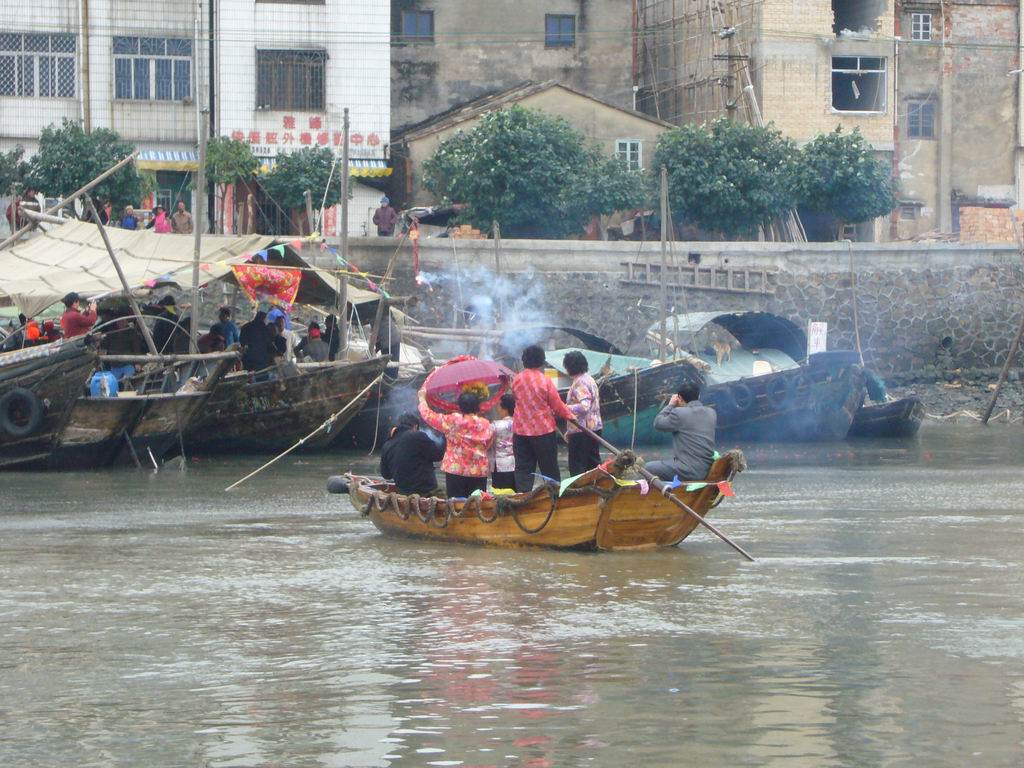









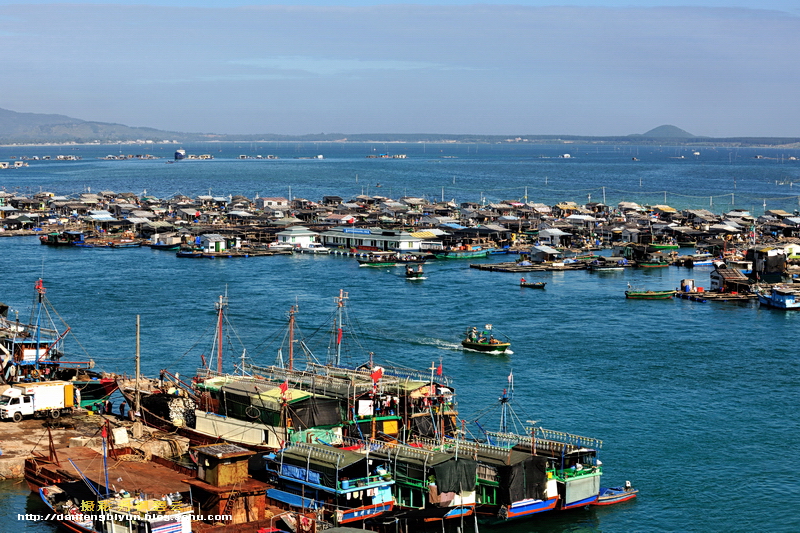
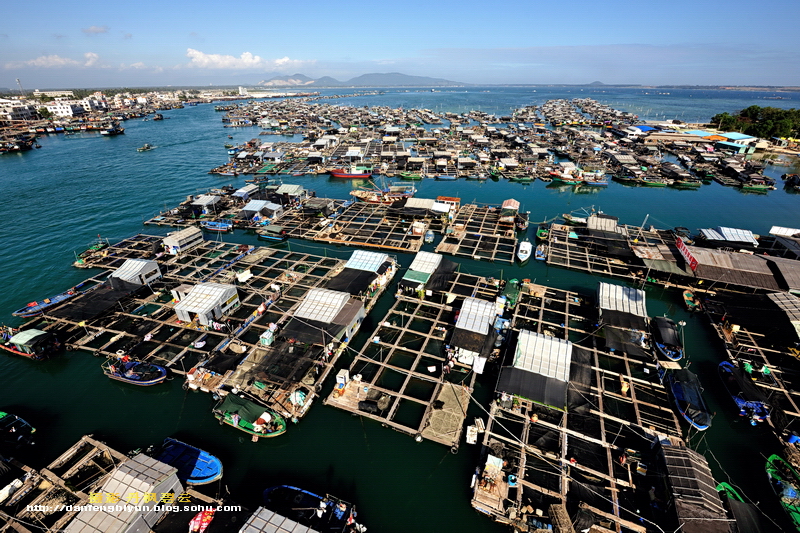
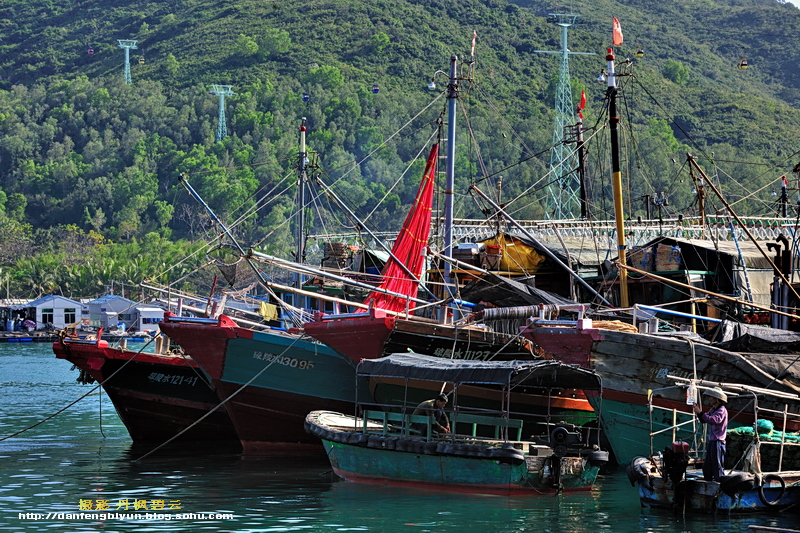


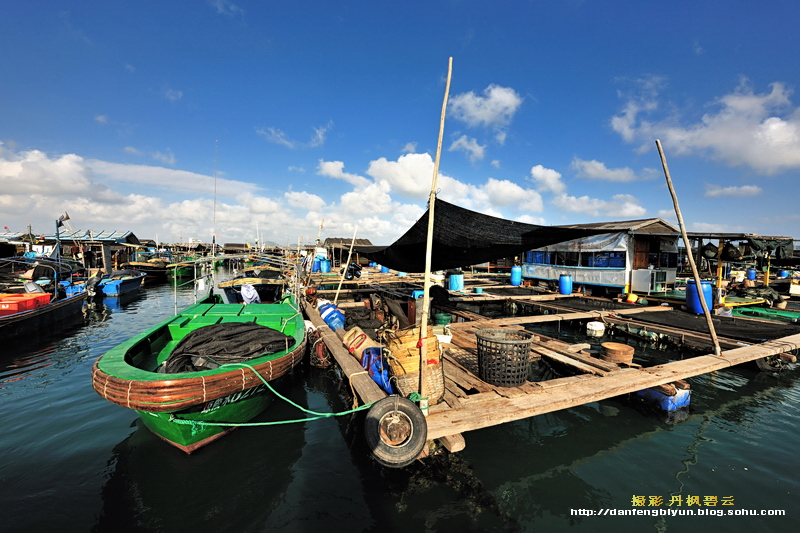
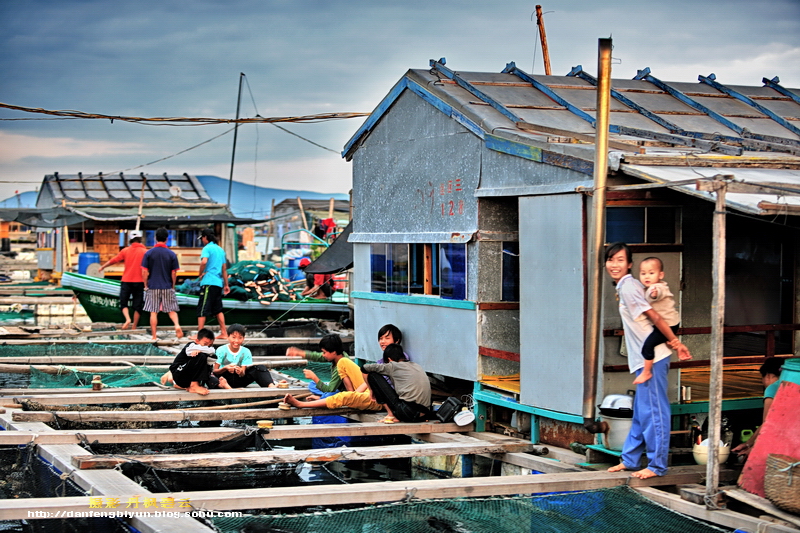

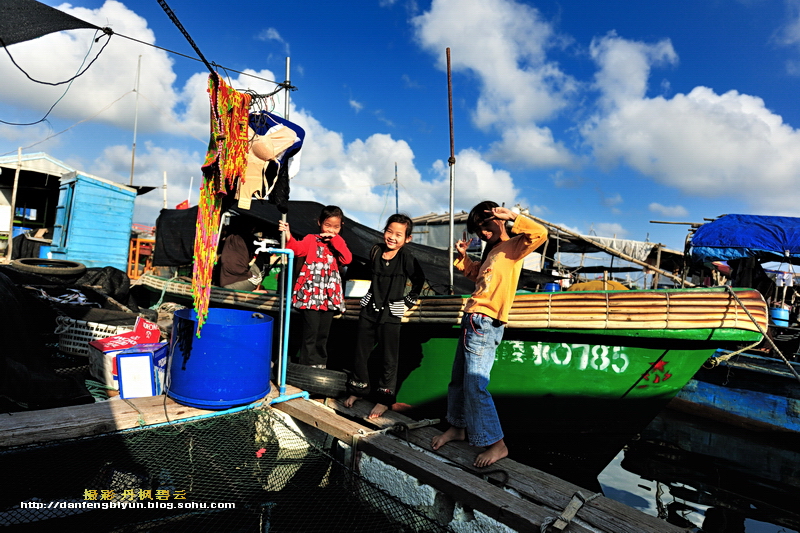
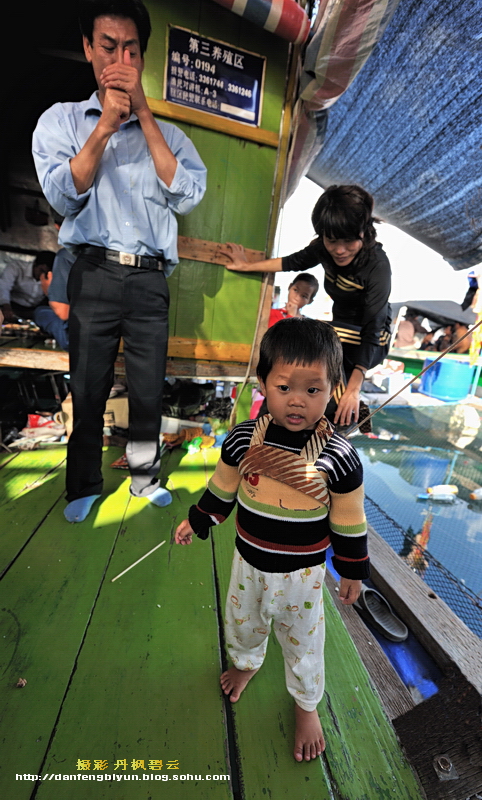



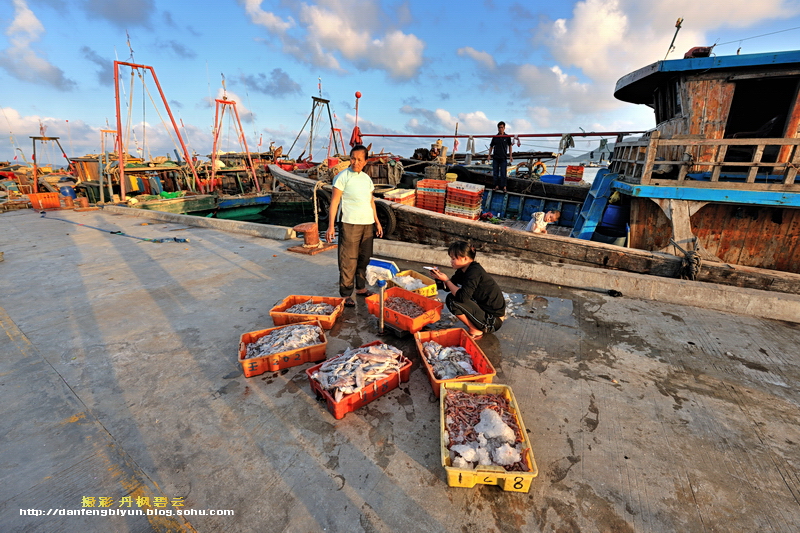
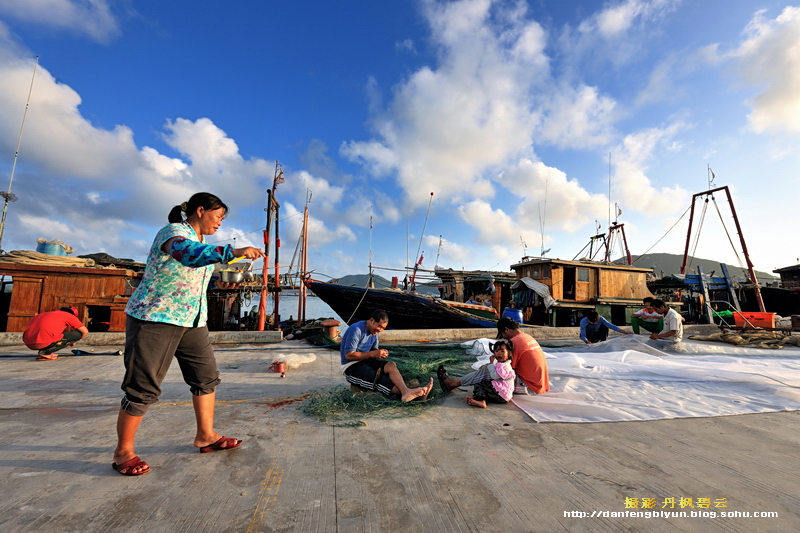








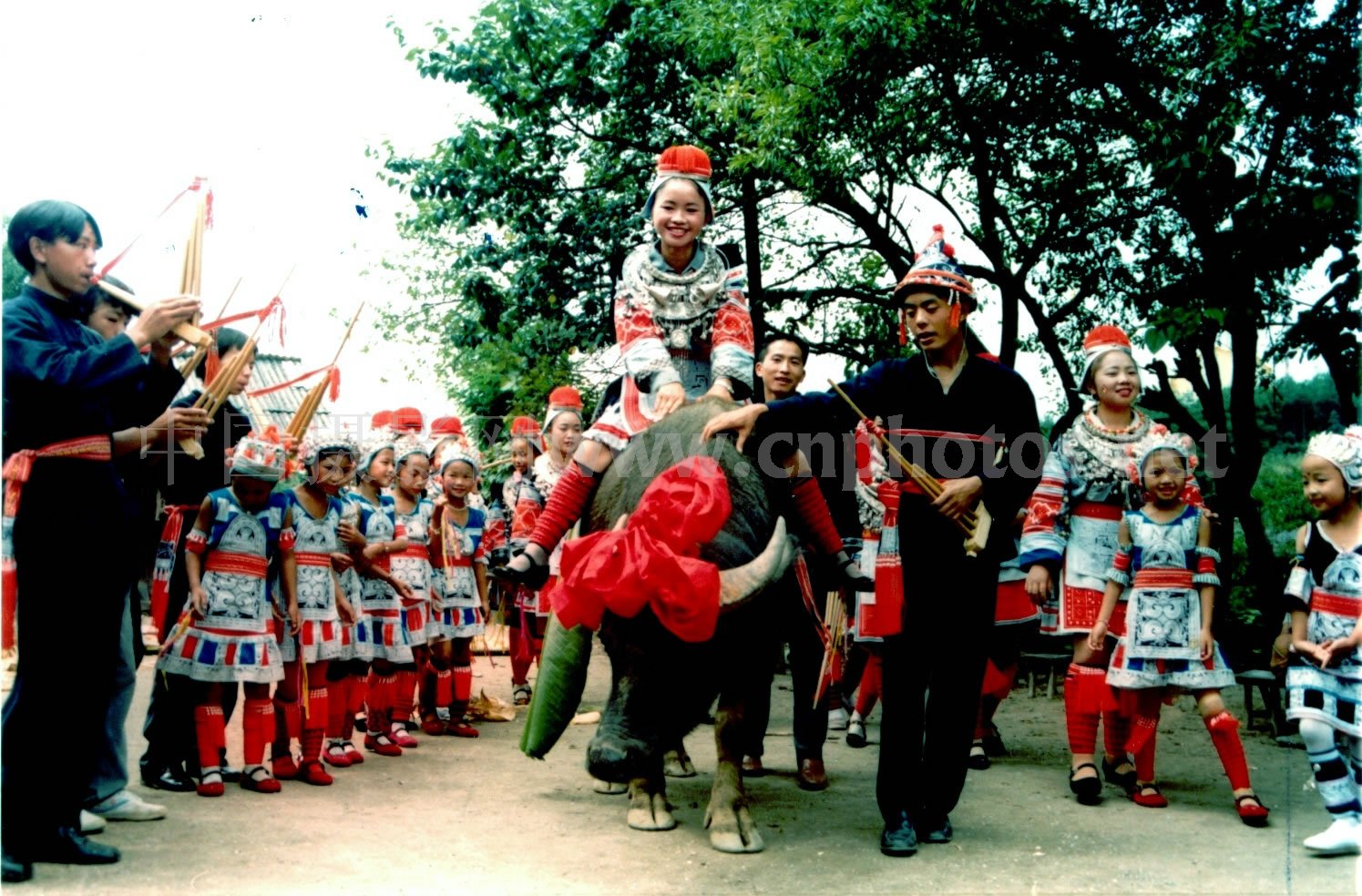
 - as Uyghurs, numbered about 30,000, are natives on the fringe of the Taklamakan Desert in Xinjiang China. The Aynu speak Uyghur and some men speak Aynu, a Turkic language with Persian vocabulary. The Äynu people engage mostly in agriculture, although in the past some were peddlers, circumcisers, or beggars. They are predominately Sunni Muslims but intermarry with the Uyghurs or other groups are very rare.
- as Uyghurs, numbered about 30,000, are natives on the fringe of the Taklamakan Desert in Xinjiang China. The Aynu speak Uyghur and some men speak Aynu, a Turkic language with Persian vocabulary. The Äynu people engage mostly in agriculture, although in the past some were peddlers, circumcisers, or beggars. They are predominately Sunni Muslims but intermarry with the Uyghurs or other groups are very rare. 